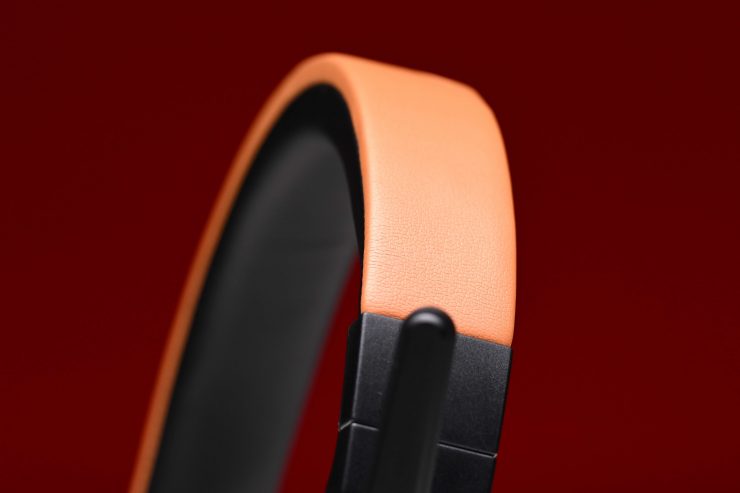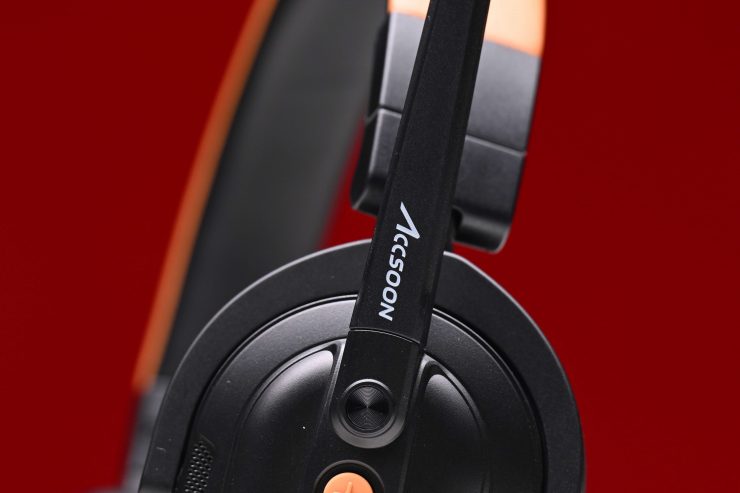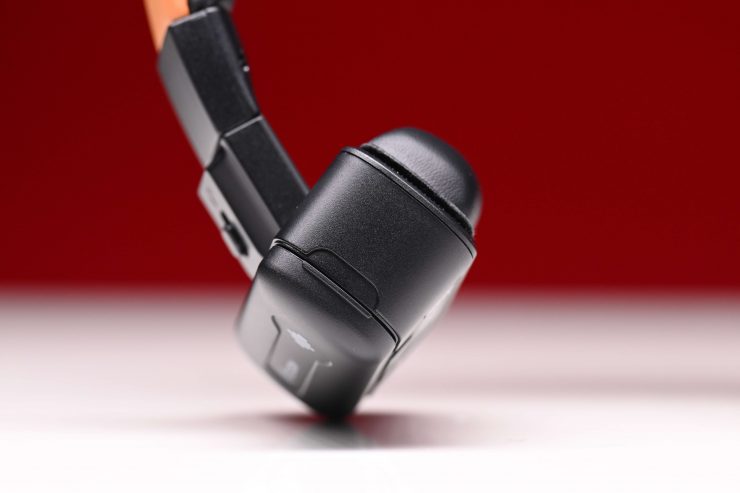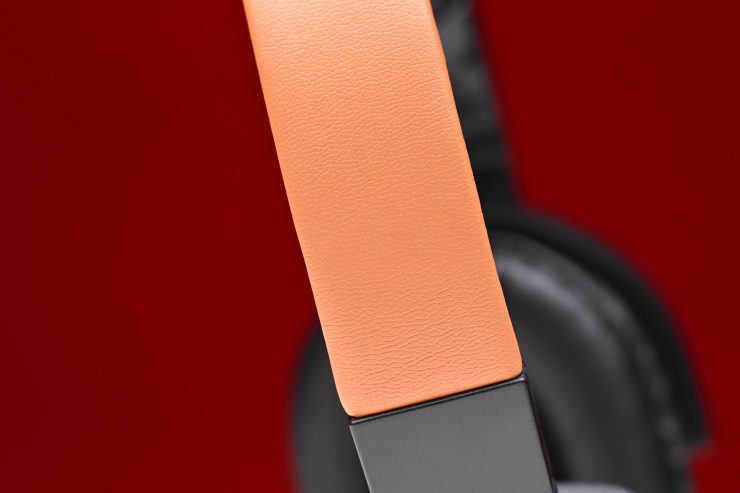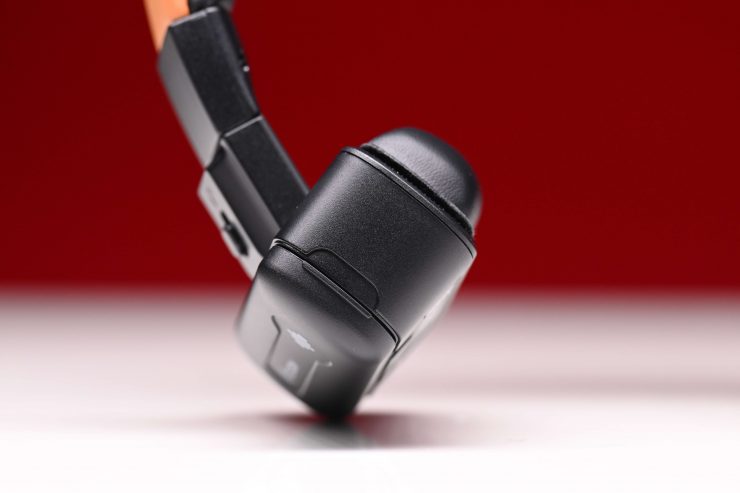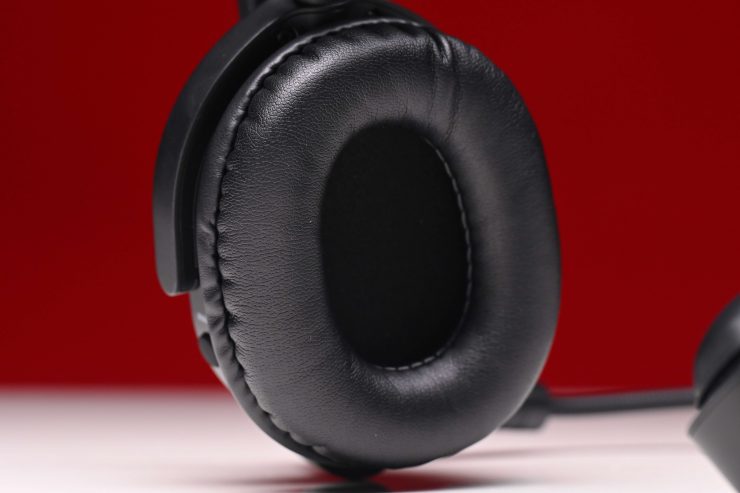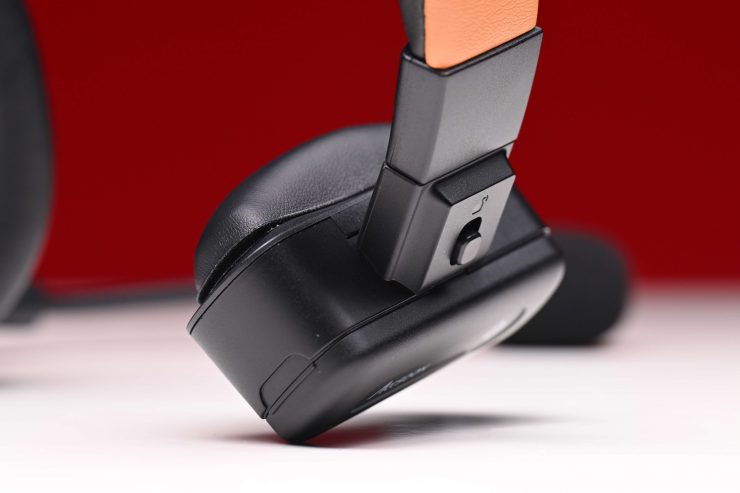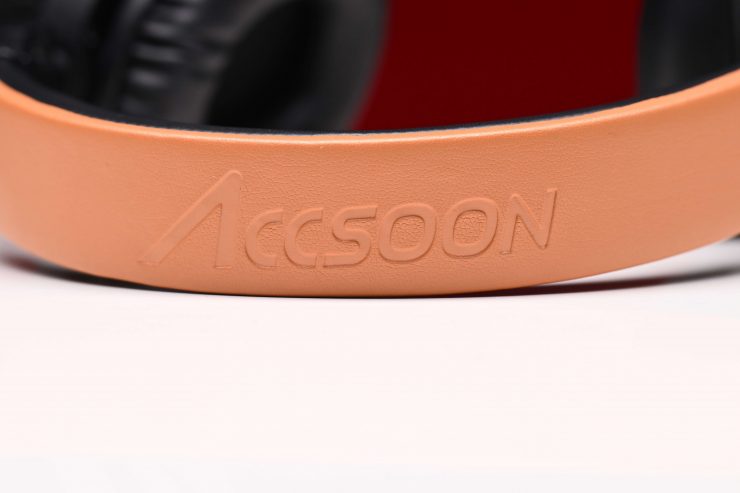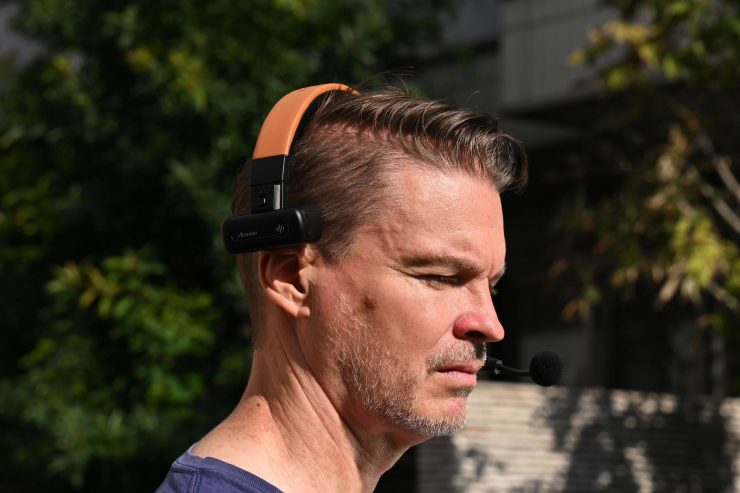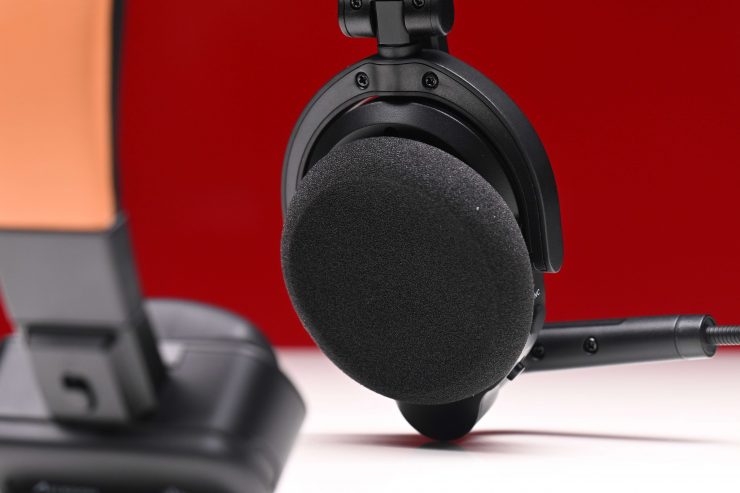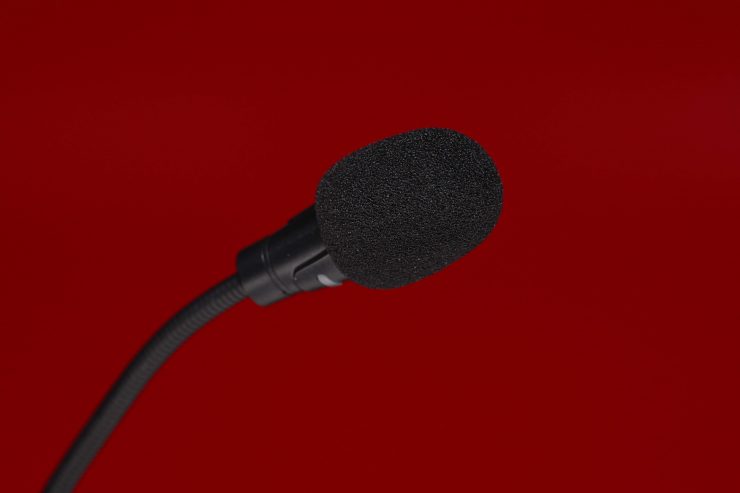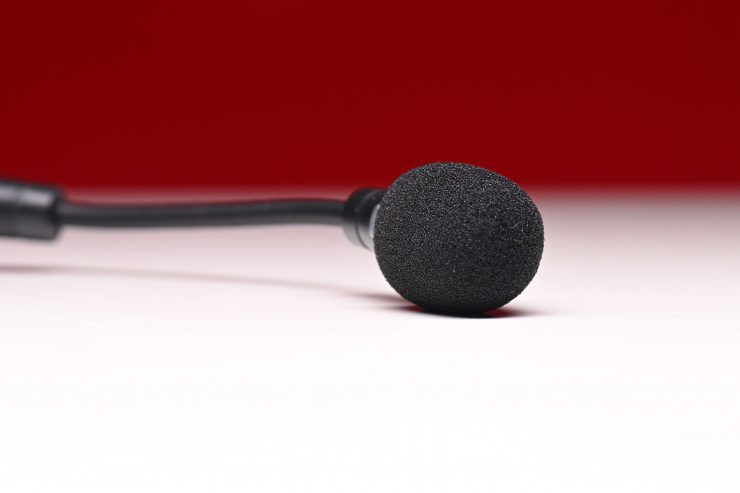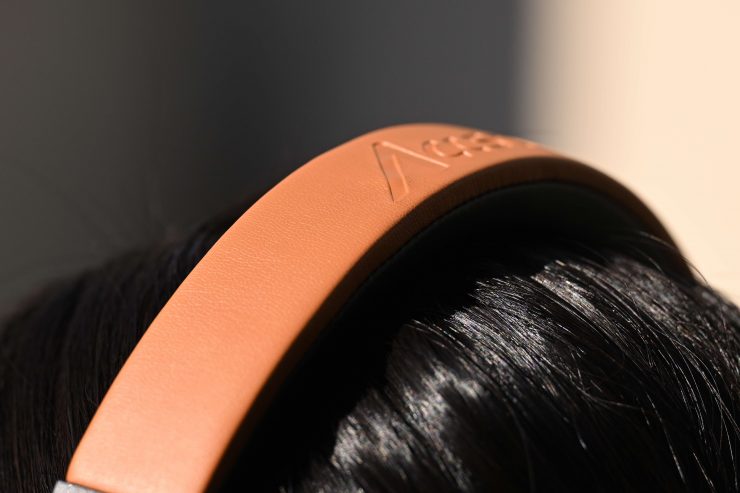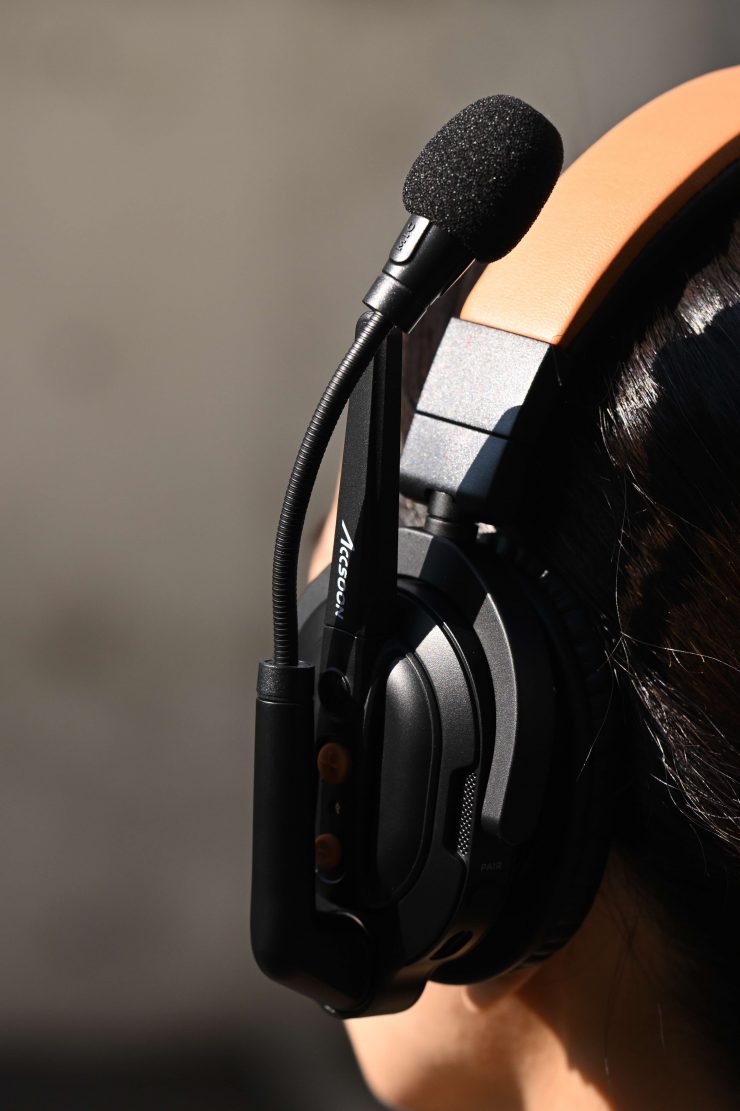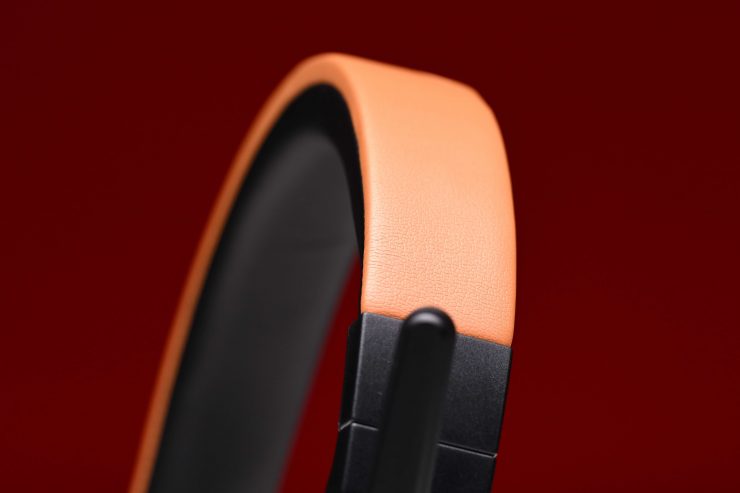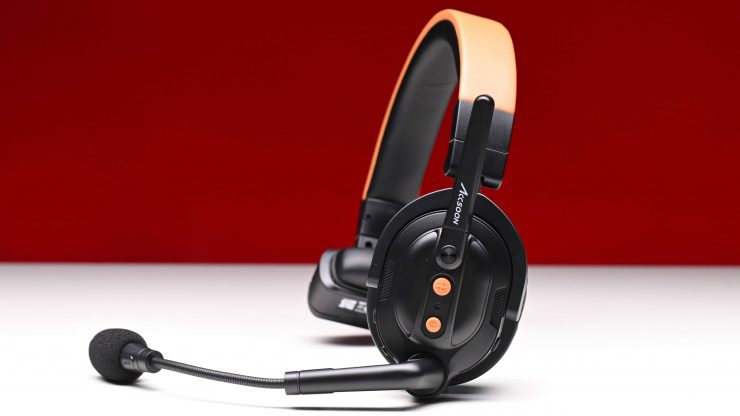
Accsoon officially unveiled its CoMo SE Full-Duplex Wireless Intercom System (2.4 GHz) in October. The CoMo SE joins the existing 1.9Ghz CoMo system in the lineup, offering a more affordable option for smaller productions that don’t need more than five headsets and are happy to utilize the 2.4Ghz band.
These look like a good low-cost alternative to the company’s more expensive offerings. The system is claimed to enable clear and reliable communication at long ranges of up to 1,312ft / 399.89m.
The specific kit I will be looking at is the Accsoon CoMo SE Full-Duplex 5-Person Wireless Intercom System (2.4 GHz).
Key features
- 1 Host Headset, 4 Remote Headsets
- 1312′ / 399m Wireless Range
- Over-Ear Single-Headphone Style
- Environmental Noise Cancellation
- Adjustable Boom Microphone
- Rechargeable Battery, 30-Hour Runtime
The headsets do not require an external hub to operate and feature a rechargeable battery, adjustable microphone, external antenna, and a single earpiece.
Why make a SE Version?
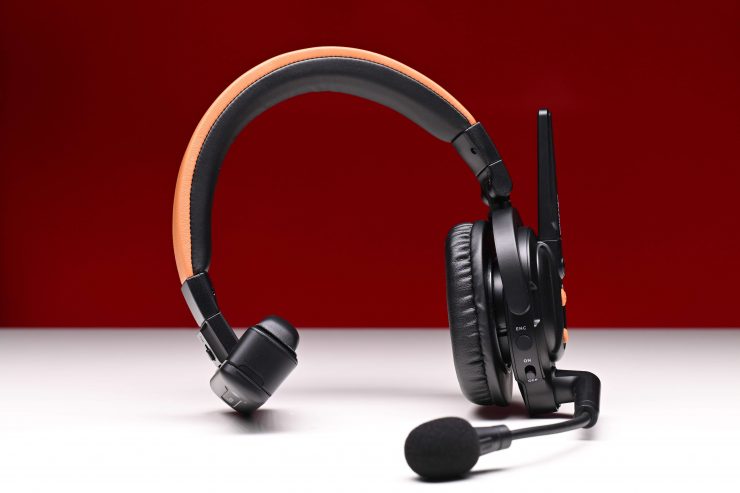
Why did Accsoon decide to make a SE Version when they already have the CoMo? Well, probably two reasons. The first is that the standard CoMo version operates in the 1.9GHz spectrum which is illegal to use in some countries. Making a 2.4GHz version allows this system to be sold are used in a lot more countries.
The second reason is cost. By utilizing 2.4GHz you can make them more affordable.
The 2.4GHz spectrum is a lot more crowded than the 1.9GHz spectrum, so it will be interesting to see if the claimed operating range holds up.
What are they for?
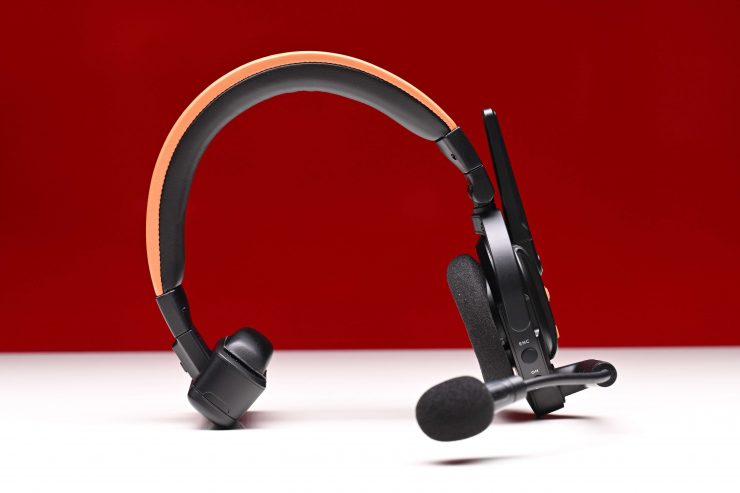
On film sets, wireless handsets can increase efficiency by allowing team members to easily communicate with each other. They can come in very handy when you are filming live shows with multiple cameras, reality TV, or any type of event where a team needs to communicate with each other over large distances.
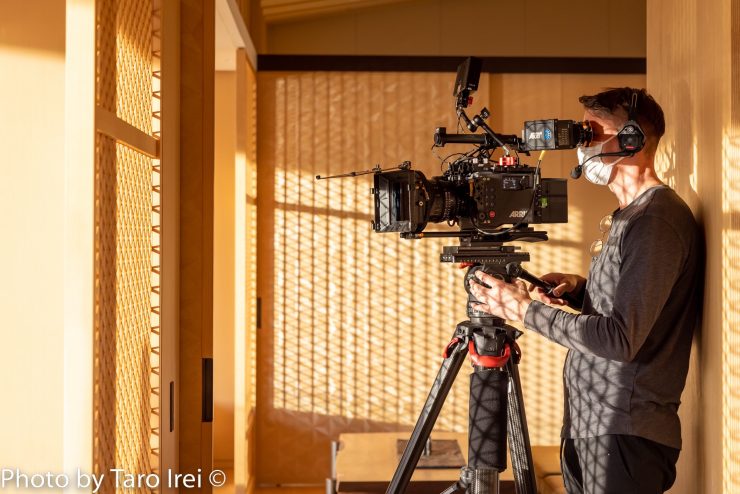
You could also use them for simple communication between a solo shooter and a director or producer, or even to talk to a sound recordist. There really aren’t any hard fast rules as to what you could use them for.
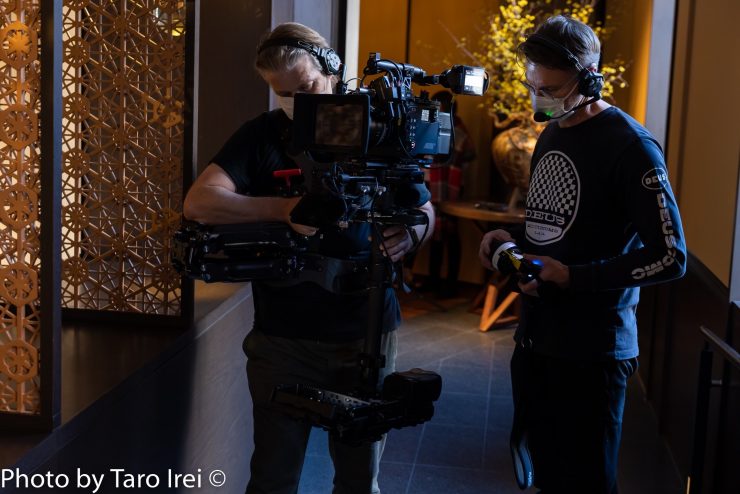
I often use headsets on my productions as it easily allows members of the crew to talk to each other when you are not close and it also means that nobody needs to shout. If you have clients on set then having the crew be able to communicate quietly and efficiently without shouting or trying to track down someone who isn’t close sends the correct message. If you want to be professional then it is also important to act professionally as well.
Wireless headsets are not a new concept by any means. There have been systems in place just like the Accsoon for a long time.
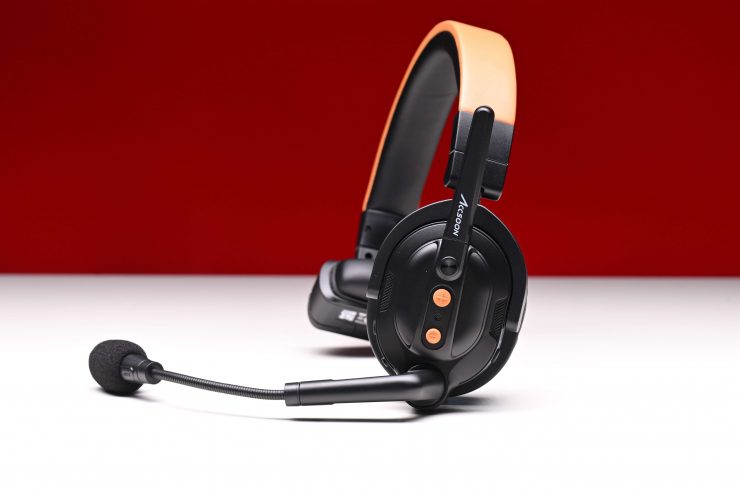

Accsoon CoMo SE 2.4Ghz 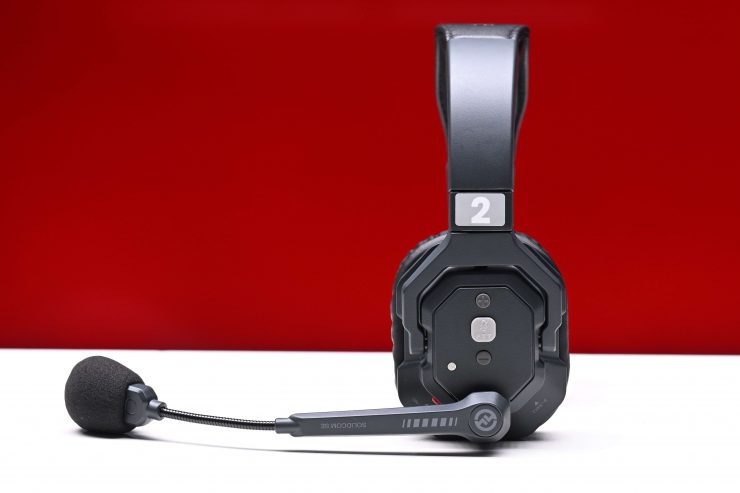
Hollyland Solidcom SE Global Version 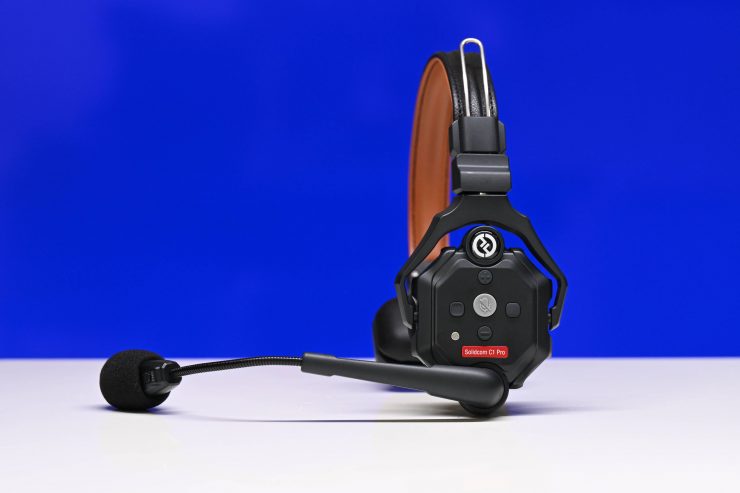
Hollyland Solidcom C1 Pro 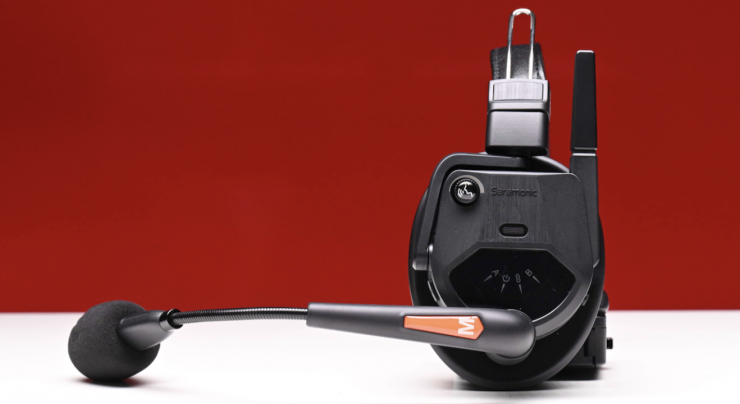
Saramonic WiTalk9 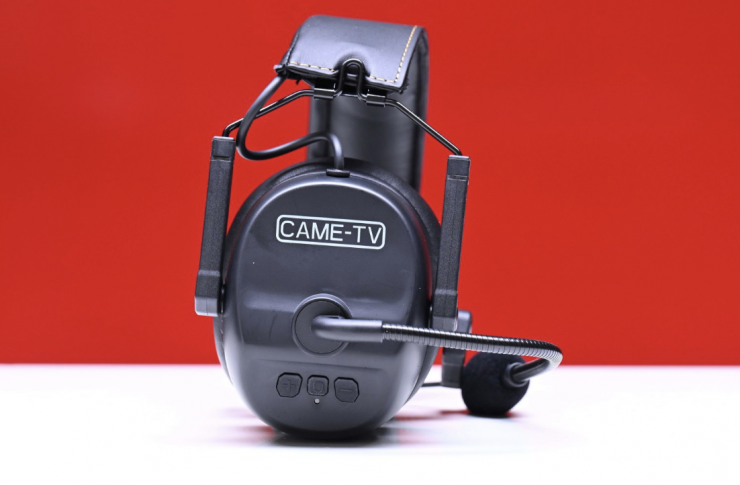
CAME-TV KUMINIK8 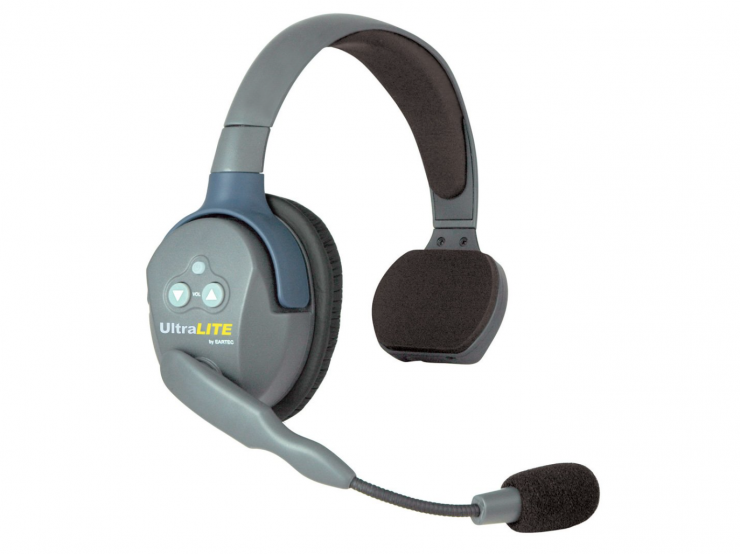
Eartec UL4S UltraLITE 4-Person System
Most wireless duplex headsets tend to look fairly similar. The CoMo SE Version features a modern-looking design. Design-wise it is fairly similar to competing systems like the Solidcom SE Global Version and Saramonic WiTalk9.
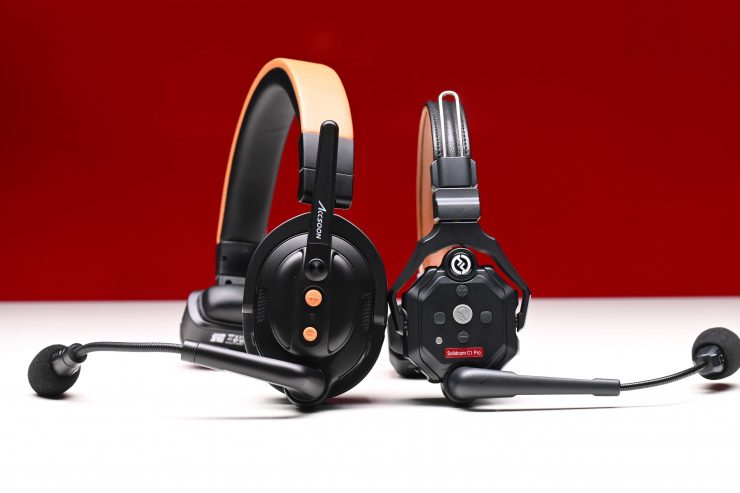
Above you can see how the design of the CoMo SE compares to the Hollyland Solidcom C1 Pro and the regular Accsoon CoMo version.
What do you get?

In the kit I was testing, this is what you get:
- Accsoon CoMo SE 1 Host Full-Duplex Wireless Intercom Headset (2.4 GHz)
- 4 x Accsoon CoMo SE 1 Receiver Full-Duplex Wireless Intercom Headset (2.4 GHz)
- 5 x Rechargeable Battery
- Charger
- Limited 1-Year Manufacturer Warranty
It is nice to see that Accsoon gives you everything you need. The included case is quite nice too. Unfortunately, you don’t get spare batteries like you do with the regular CoMo version.
Build Quality
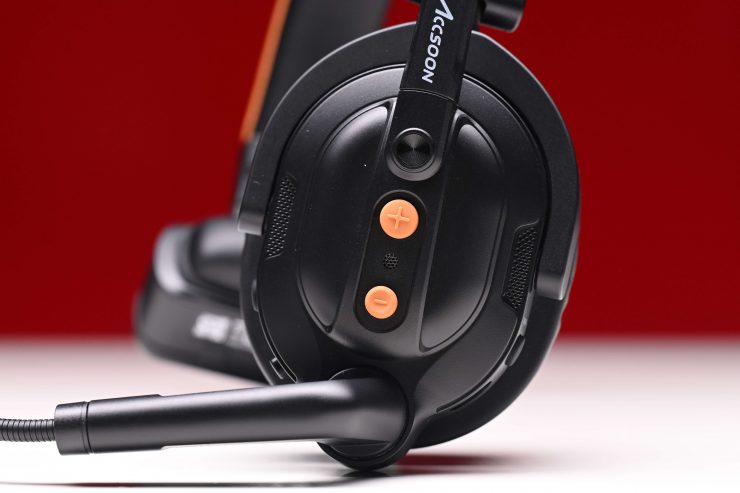
The build quality is pretty decent despite a lot of lightweight components being used. The headsets weigh 8.4 oz / 237 g (with Batteries). As a comparison, the competing Hollyland SE Global Version headsets weigh 195g / 6.87oz with a battery inside.

While some parts feel a little plasticky, I didn’t feel like there was anything that would easily break.
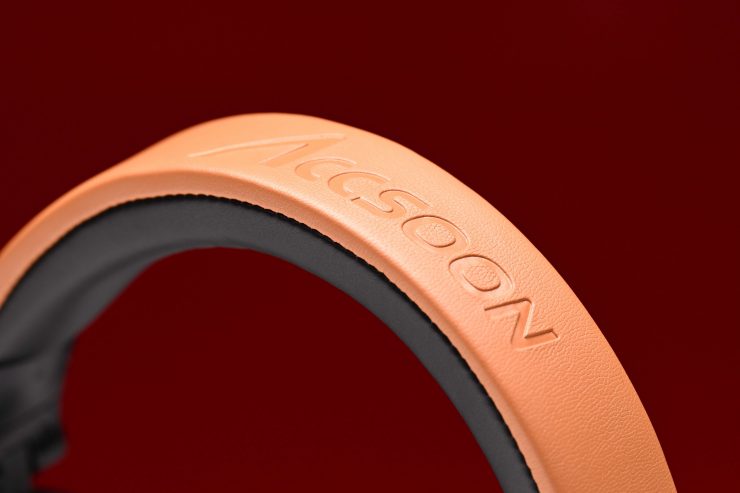
The quality of these more affordable systems has gotten a lot better in recent years and I personally didn’t feel like there was any huge difference between the regular CoMo and the CoMo SE despite the large price difference.
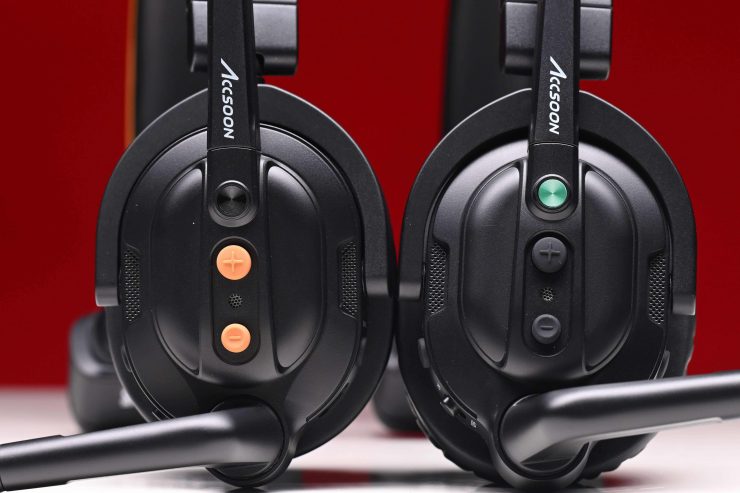
The design of the CoMo SE is almost identical to that of the regular CoMo. There is no point in changing something just for the sake of it. Apart from the color difference, the design and form factor are identical from what I can tell. CoMo SE. There is no point in changing something just for the sake of it.
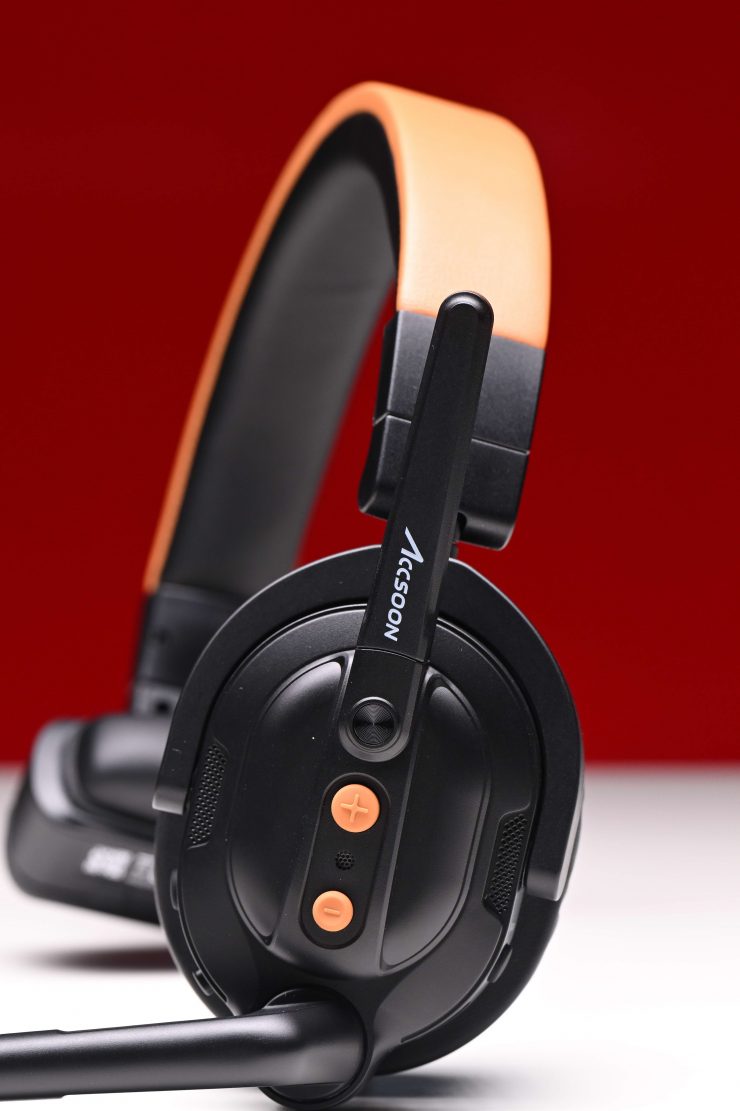

CoMo SE 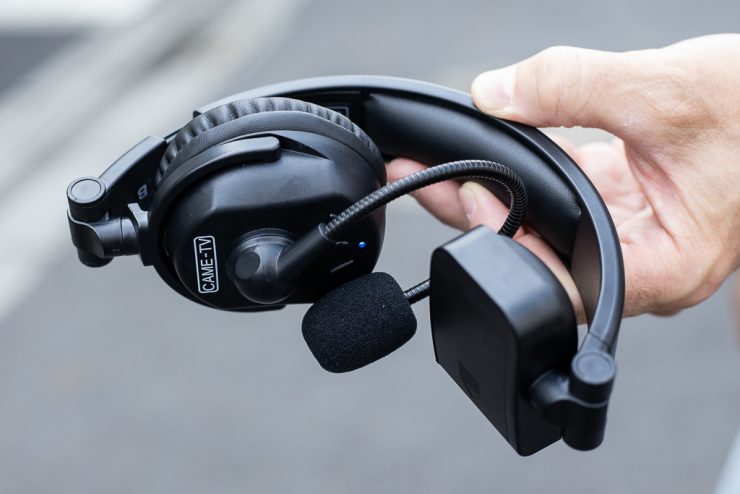
CAME-TV WAERO
Storage-wise they don’t fold up like the CAME-TV WAERO, but I didn’t find that to be an issue as the whole system comes in a nice storage case anyway. I often find that headsets that bend don’t over as much stability and they can be more prone to breaking.
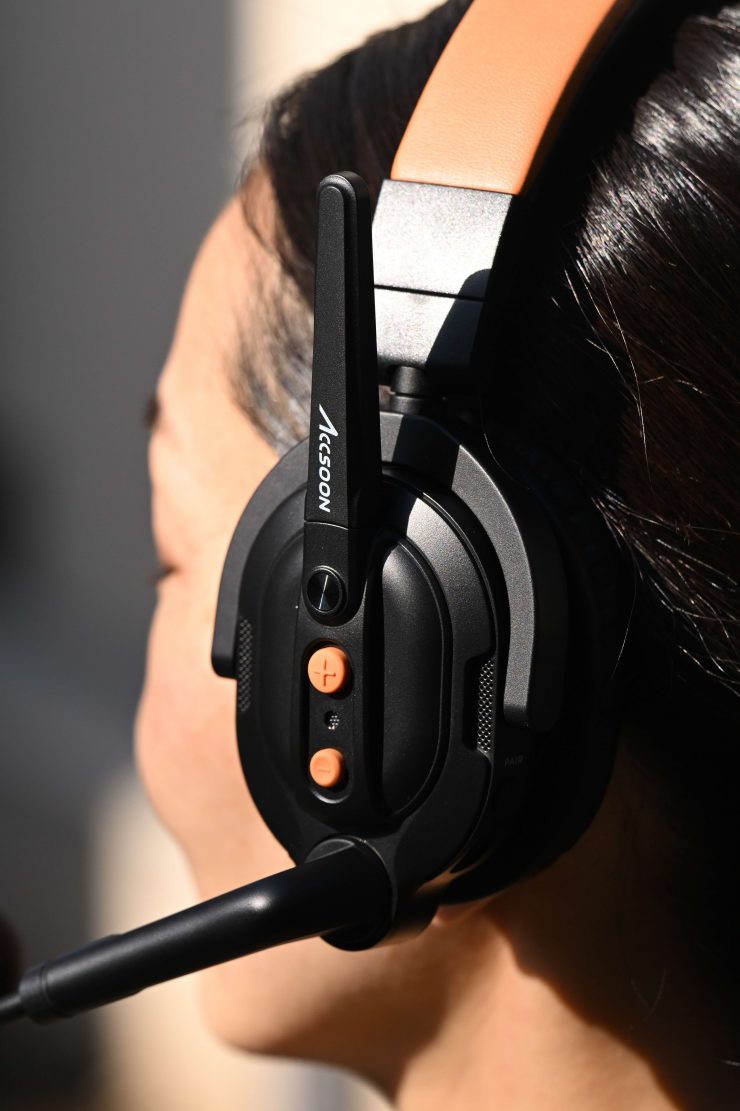
Like most of the similar headsets on the market, you can wear them on either your left or right ear. This reversible design is a nice touch.
If you are shooting with a camera on your shoulder you don’t want the headset to interfere with how you operate. The only issue I found is that because the opposite side pad is quite large it does end up hitting the camera if you are a left eye operator like me.
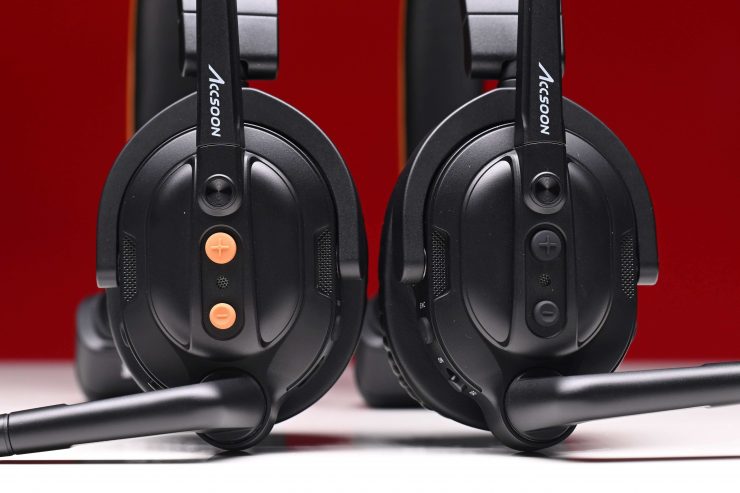

Accsoon CoMo SE 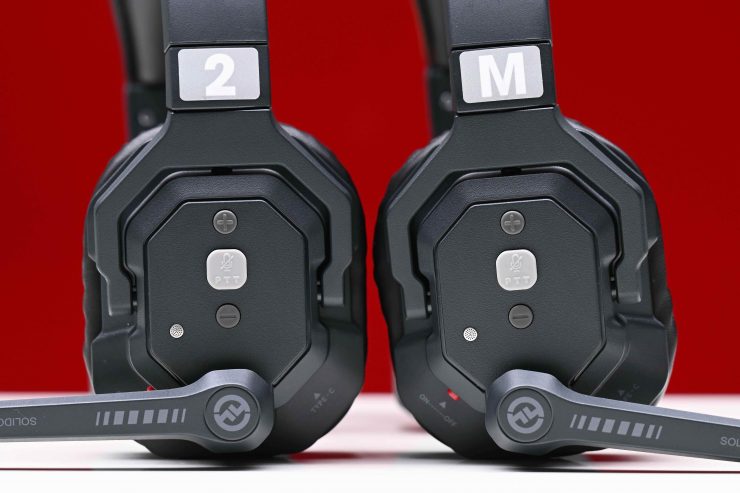
Holyland Solidcom SE Global Version
The Master headset can be identified by the orange colored buttons. Accsoon does give you some stickers that you can use to help with this, but I would have preferred to have seen a big ‘M’ on the master unit.
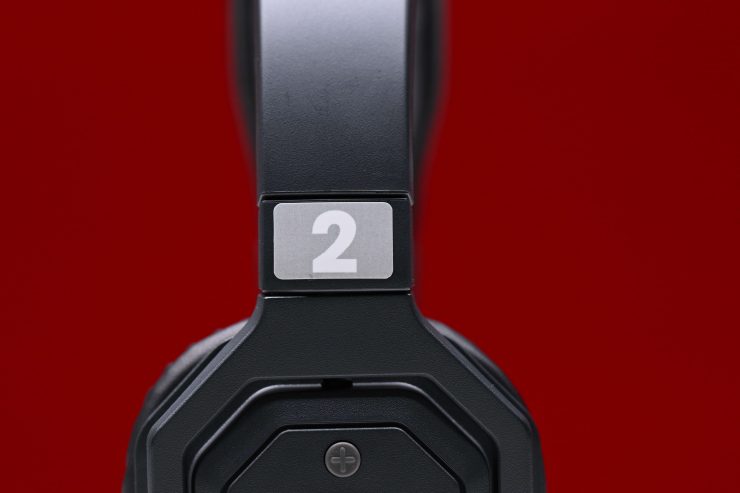
The other headsets don’t feature any numbers which does make them harder to identify than say the competing Hollyland SE Global Version.
Comfort
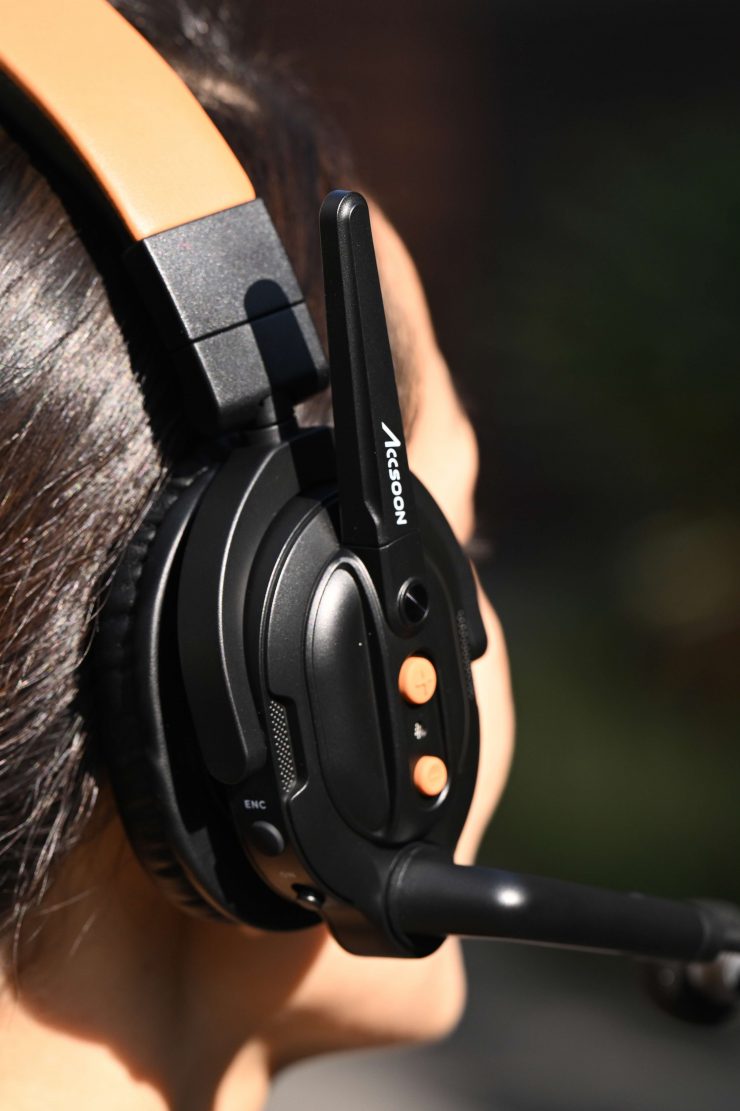
Comfort is right at the top of my list when it comes to purchasing any type of headphones. If a headset isn’t comfortable it is just going to annoy you and get in your way. So is the Accsoon CoMo SE comfortable to wear?
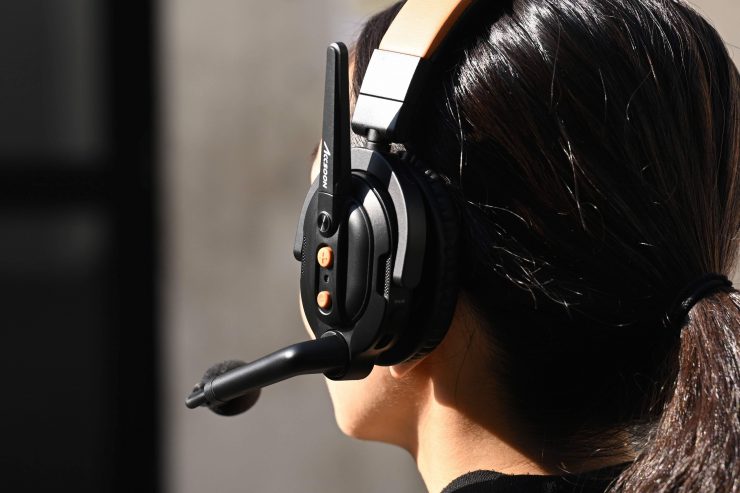
With any type of headphone, comfort is going to be different depending on the individual. We all have different head shapes and sizes. Our ears aren’t all the same either. What may be comfortable for one person, isn’t necessarily going to be comfortable for someone else.
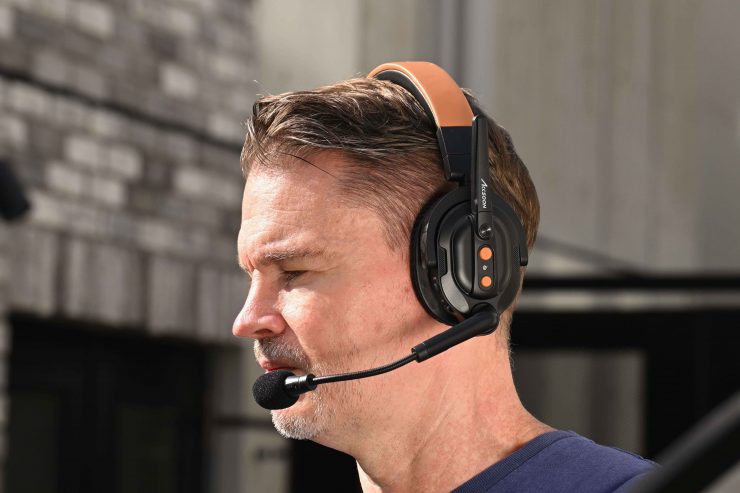
The minimum size you can make it was a little too big for my particular head shape so it didn’t sit snuggly on my head as I would have liked..
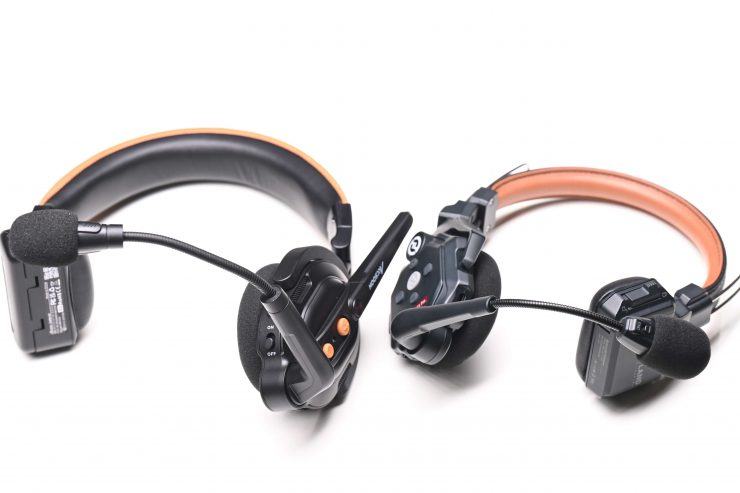

Accsoon CoMo SE on the left & Hollyland Solidcom SE on the right
With the competing Hollyland Solidcom SE the minimum size of the headband is smaller.
If I am going to wear something for a long period of time, which is something you would be doing in most scenarios with a duplex headset, it has to be very comfortable. Some previous systems I have tried were very uncomfortable to wear and I found myself always wanting to take the headset off.
A good test to determine comfort is to just wear the headset for a while and see if you almost forget that you have it on. If you want to take it off after a couple of minutes it isn’t comfortable.
In all honesty, I didn’t find the CoMo SE as comfortable to wear as the competing Hollyland SE Global Version. I just want to stress that it isn’t that they are uncomfortable, but you always want to compare a product against something else that you have previously tried. I thought it might be just me but I got a few other people to try the headset and they preferred the Hollyland. Others I asked couldn’t tell me exactly why they preferred the Hollyland, but they just found it more comfortable to wear.
I also found that the tension on the microphone was too much and when you try to lift it up the whole headset starts moving around on your head.

The CoMo SE does come with two sets of different-sized ear covers. I usually prefer the smaller foam ear cover rather than the larger over-ear cover.
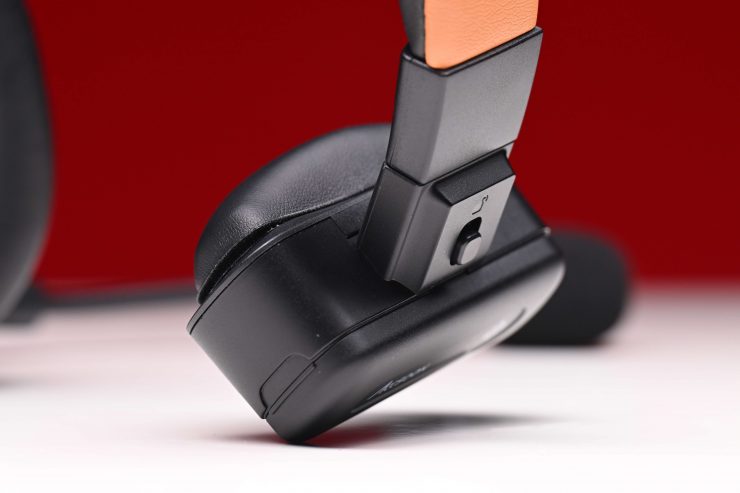

Accsoon CoMo SE 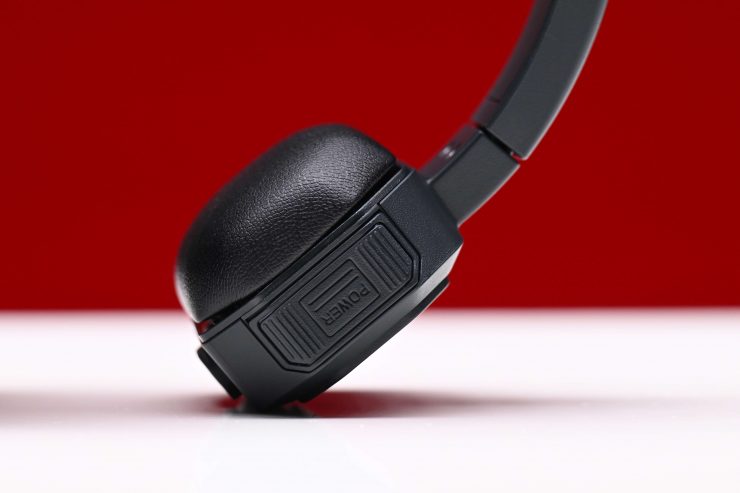
Hollyand SE
The pad on the opposite side is quite large, and because it is bigger and heavier than the Hollyland SE, I didn’t find it as comfortable.
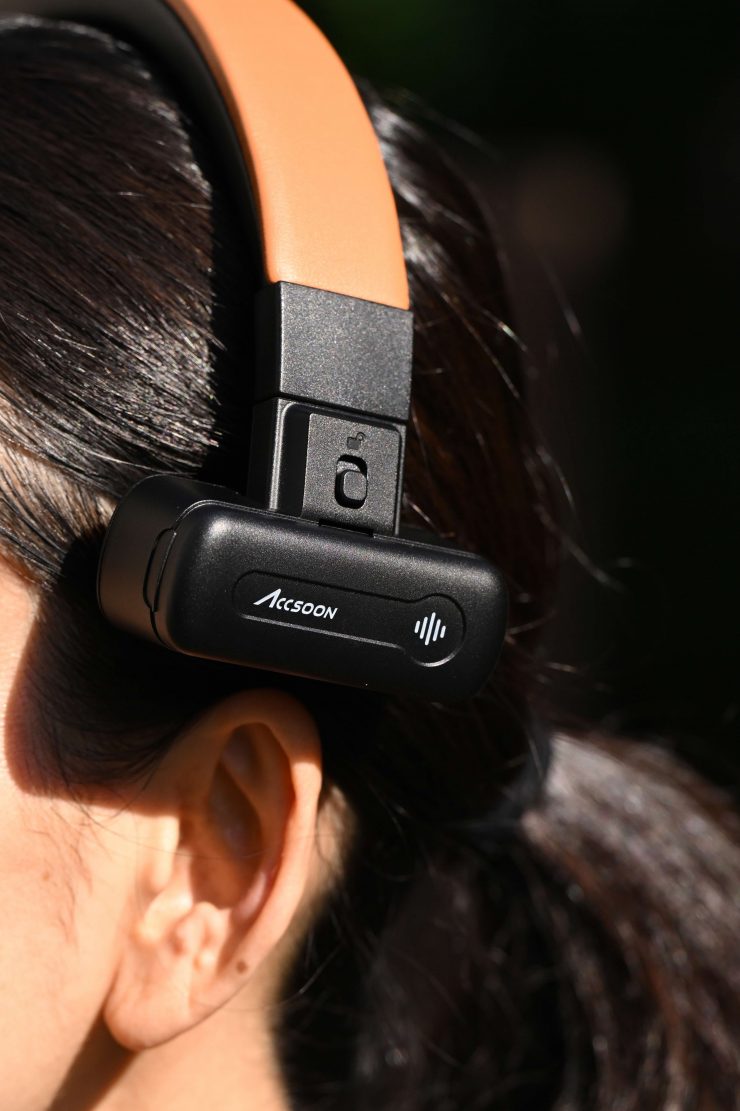
On the positive side, the pad does sit in a spot where it doesn’t end up pushing on the top of your ear too much. Again, everyone’s head shape is different, so what is comfortable for one person, may not be comfortable for someone else.
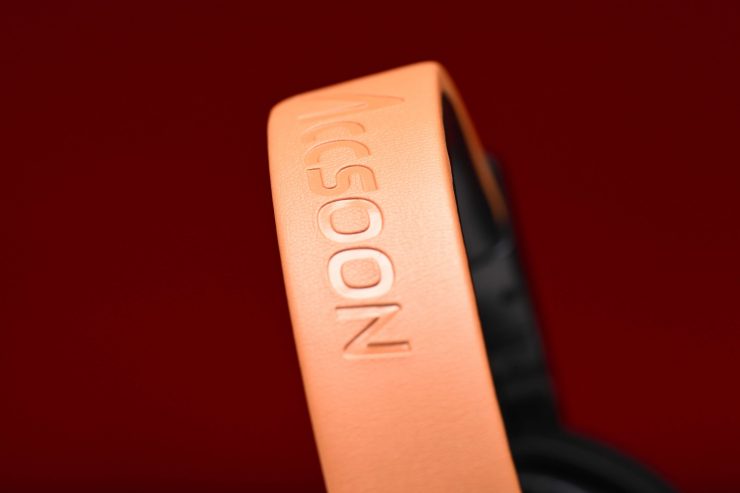
The padded headband is reasonably soft and comfortable.
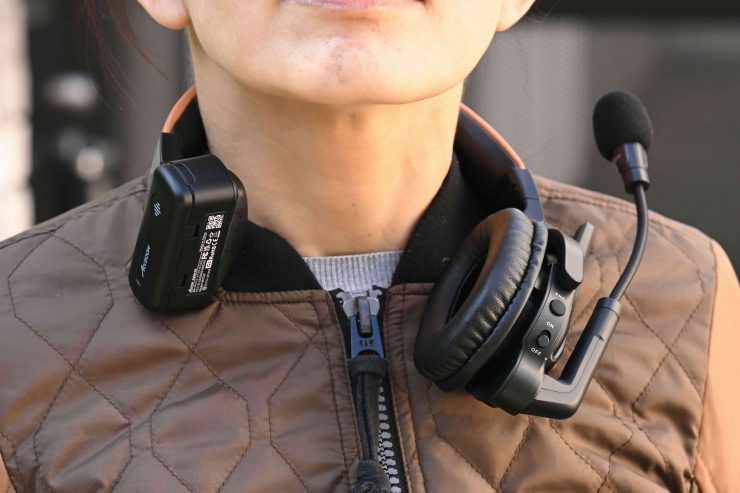
The headsets are also light enough that when you don’t need to use them you can put them around your neck.
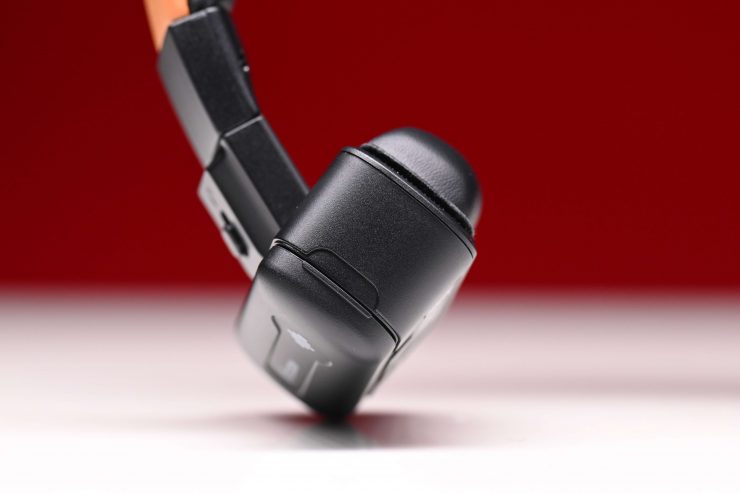
The battery slot is also located on the back of the pad, but the battery is a little heavy so the headset doesn’t feel that well balanced and it feels like there is more weight on the pad side.
Operating Range
Unlike the regular CoMo which utilizes the less crowded 1.9GHz spectrum to avoid interference with other devices, the CoMo SE communicates over the more commonly used 2.4GHz spectrum.
Accsoon claims that the maximum operating range of the CoMo SE is 1312′ / 399m (line of site). This range is a bit further than some comparable products. I will test the range further down in the review.
Battery
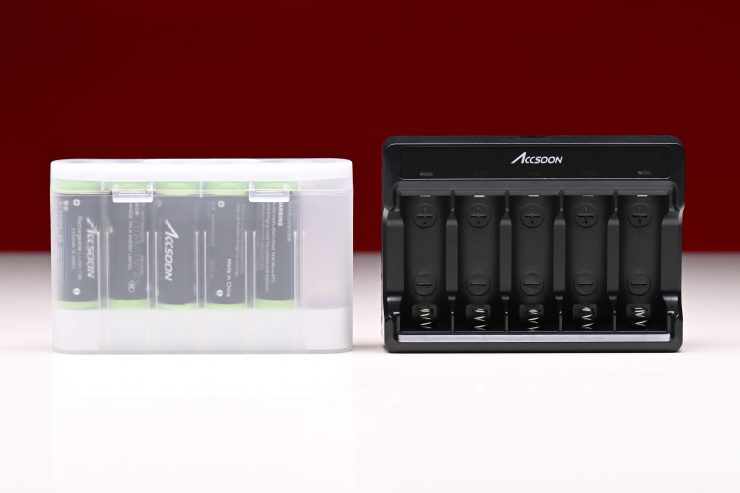
The Accsoon CoMo SE Full-Duplex 5-Person Wireless Intercom System (2.4 GHz) comes with 5 batteries. As I mentioned earlier in the review, you don’t get any spare batteries. The batteries are 2320mAh (8.36wh) rechargeable Li-ion batteries.
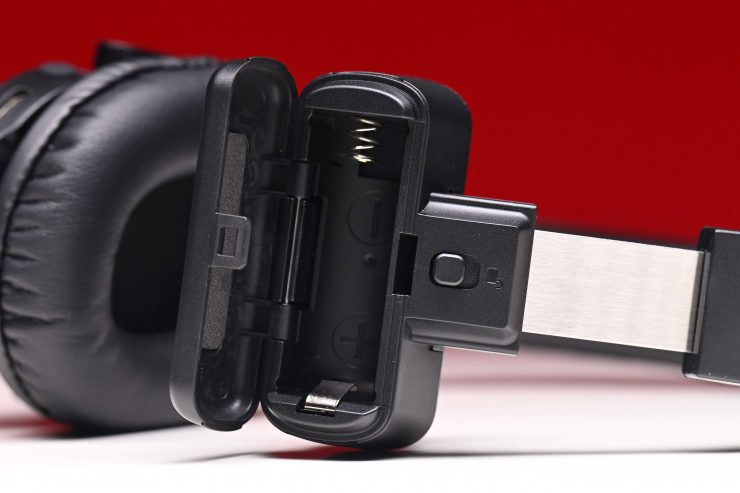
The battery goes into a slot on the opposite side of the headphone.
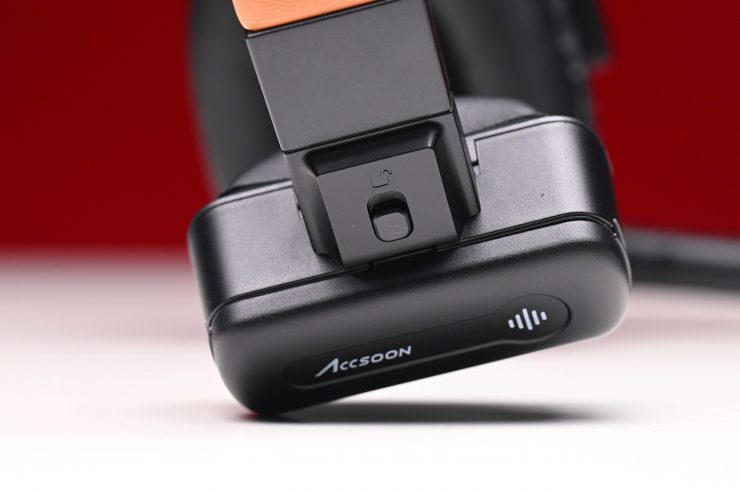
To remove the battery there is a battery release button that you press.
The batteries need to be recharged externally via a dedicated multi-port charger, or you can charge them individually using USB-C. Each battery takes around 3 hours to fully charge. The batteries are claimed to support up to 30 hours of runtime in the remote headsets and for the master headset. This is a very good amount of time and you can easily get through a very long shooting day.
The system I was reviewing comes with a nicely made charger that can charge up to 5 batteries at once. Now, to save on cost Accsoon has used the same charger and batteries for both the CoMo and CoMo SE.
The charger is reasonably lightweight and it is easy to use. It is nice that it fits inside the case with everything else.
As I mentioned earlier, you can also charge the batteries inside the headsets through the USB-C port if you prefer, but I personally think using the charger makes more sense.
What controls do you have?

The controls on the headset are straightforward and easy to use which is exactly what you want. Headsets shouldn’t be complicated. When you are working the last thing you want to be doing is messing around with controls or settings. KISS is the best philosophy here.
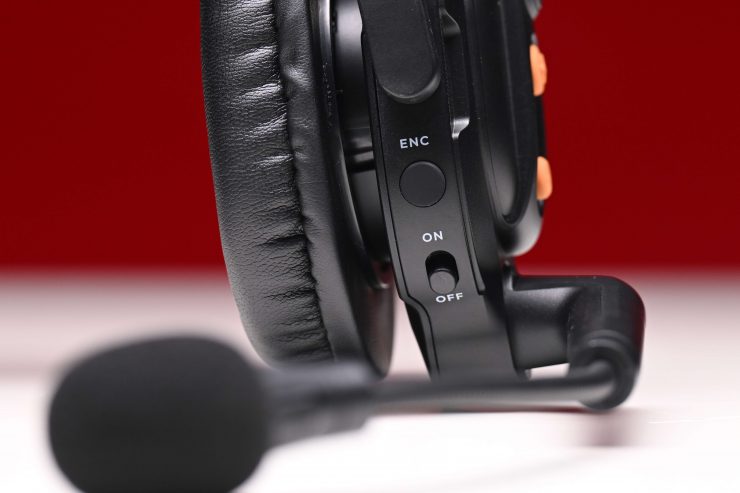
There is a small On/Off switch that is located on the edge of the main headphone as well as the ENC button.
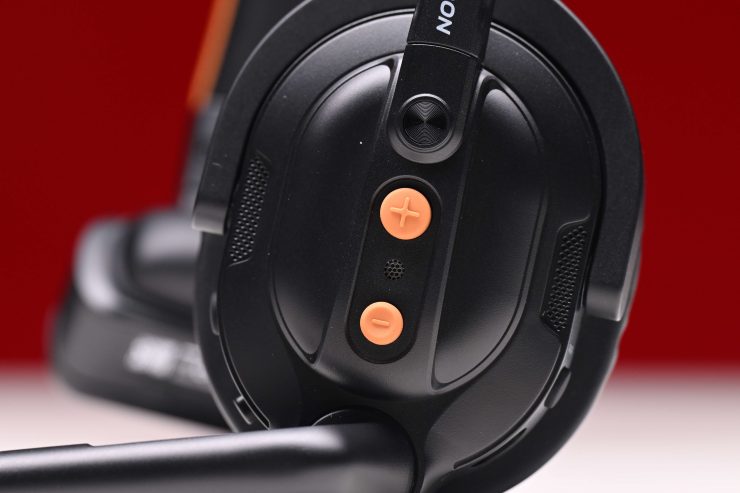
On the side of the headset, there are two buttons.
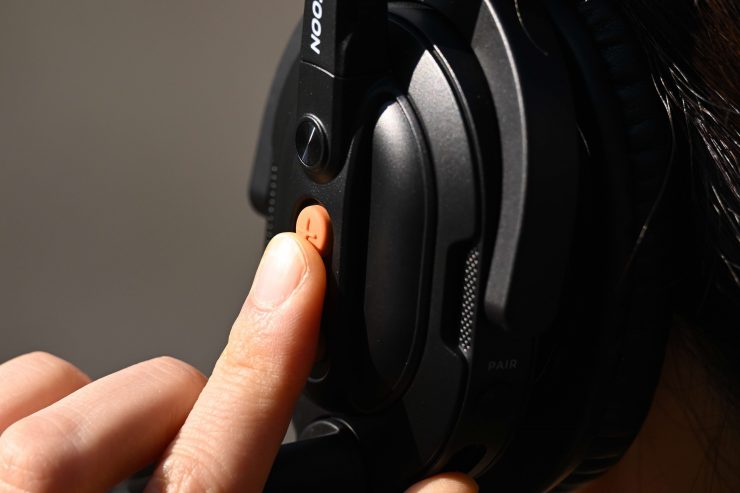
These buttons are for adjusting the volume.
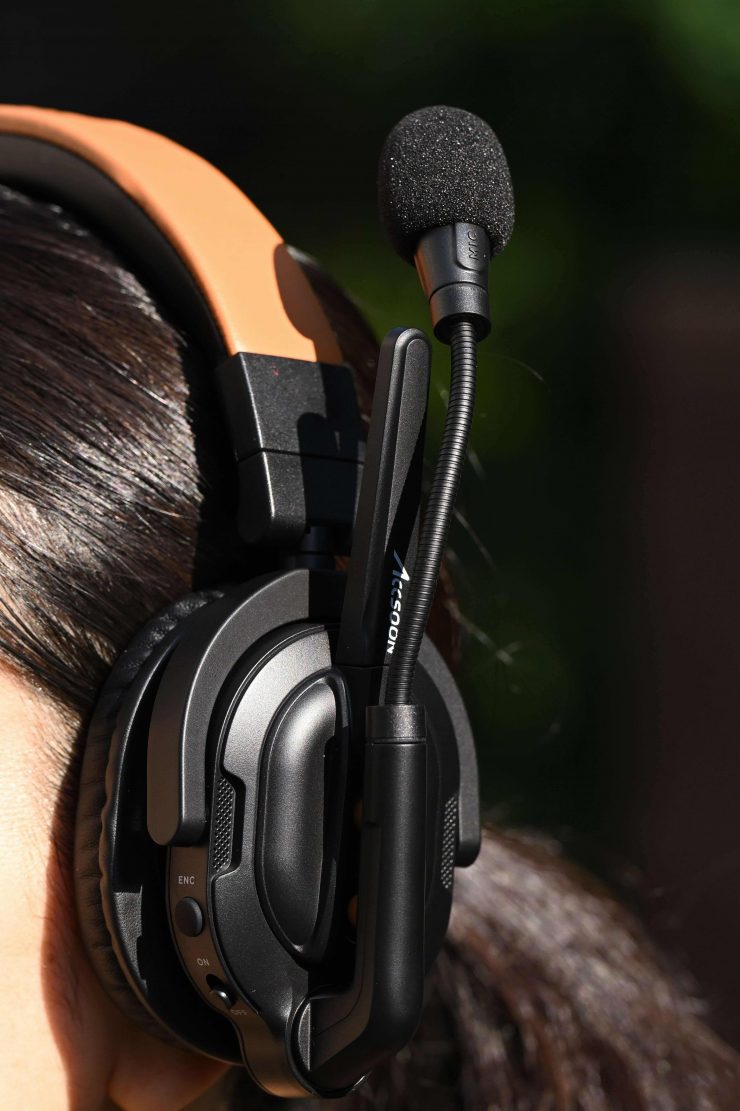
There is no button option for muting the microphone and you can only do this by physically pulling the microphone up.
There is also a Pair button if you need to manually pair headsets that is located next to the USB-C input.
How do they work?

The headsets automatically pair once they are on which I like. It saves time and there is no setup required. When the headsets are first turned on you will hear a little audible message saying ‘Power On’. Then if you have the Master headset and at least one other headset you will hear ‘Connected’. You do need to use the master headset for the system to work, but you can just use 2 of the headsets, you don’t have to use all of them.
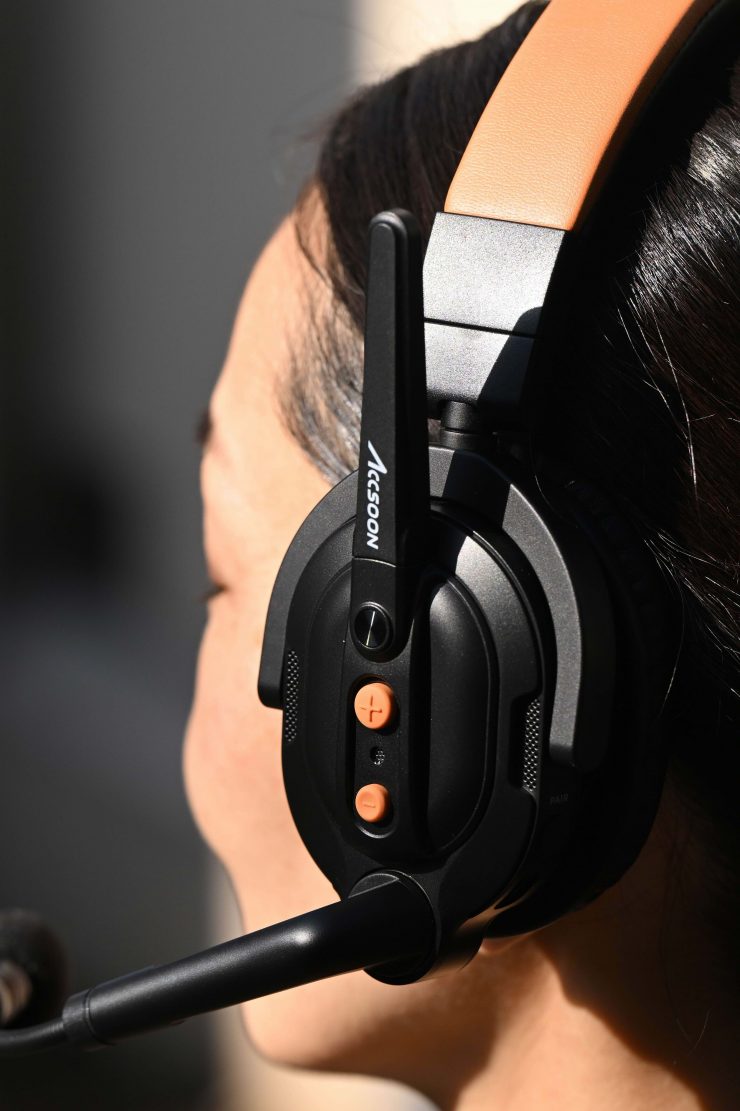

Active mic position 
Mute mic position
As I mentioned, to mute the microphone you pull it up past a certain point where you hear a little chime.
Above you can see the issue I found when moving the microphone up to the mute position. You can’t do this with one hand without the whole headset moving. The only way I found that that you could do it correctly is if you cupped the headphone with your palm and adjusted the microphone position.
As a comparison above you can see the Holyland Solidcom C1 Pro. Just as a note the Solidcom SE Global Version works in the same way.
If you press the ENC button you will also get an audible message saying ENC On or Off.
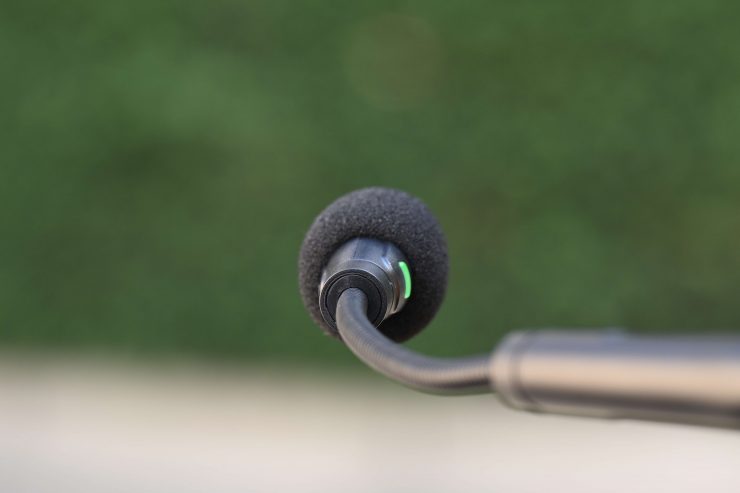
Accsoon has placed a little indicator light down near the microphone so you can quickly identify any issues. Here is what the indicators mean:
- SOLID GREEN– Power On/ Mic On
- SLOW FLICKERING GREEN– Disconnected/ Connection Issue
- FAST FLICKERING GREEN– Pairing
- SOLID RED– Mic Muted
- SLOW FLICKERING RED– Battery level lower than 10%
There are also the following audible messages that can be heard:
- A chime sound when the volume is adjusted
- A chime sound when the Mic is muted or unmuted
- Audible ‘Power On’ when the microphone is turned On or Off
- Audible ‘Connected’ when the headphones are connected
- Audible ‘Disconnected’ when the headsets aren’t connected
- Audible ‘ENC On/Off’ when ENC is turned On or Off
- Audible ‘Pairing’ when headsets are pairing
- Audible ‘Pairing Success’ when headsets have paired
- Audible ‘Low Battery’ when the battery is low
Audio quality
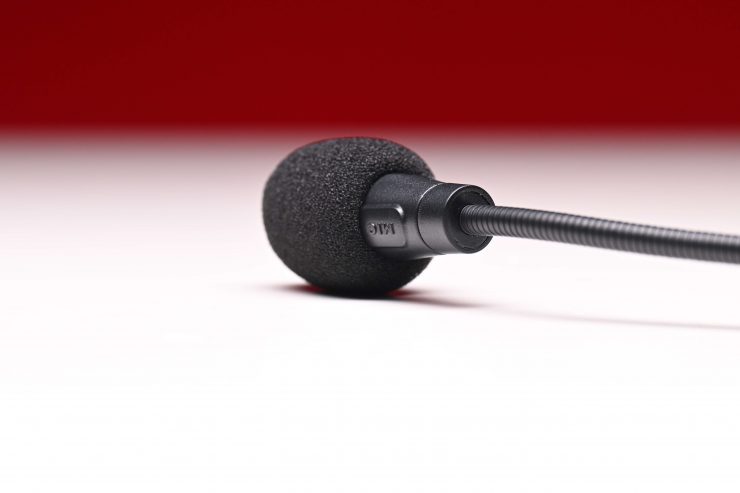
Along with comfort, audio quality is very important with any type of duplex wireless system. You need to be able to hear and communicate with your team effectively. If the audio quality isn’t good then a system becomes useless. I found the quality of the CoMo SE to be fairly similar to that of the regular CoMo system. I actually preferred having the ENC (electronic noise cancellation) off as the audio sounds a little thin and tinny with it on. I also encountered an issue where I could hear myself speaking back in the headphones and I presume this is because the microphone from the other headset was picking up the audio coming from the headset. This isn’t as noticeable if you have the volume set lower.
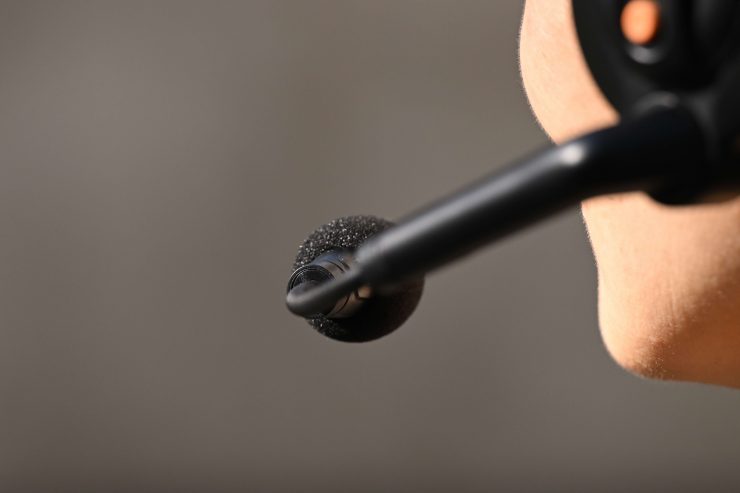
The biggest caveat with a 2.4 GHz system is the latency. I found the latency to be very noticeable and significantly worse than if you were using a 1.9 GHz system. If you are standing within a few meters of someone you are talking to this can be annoying, but over larger distances, it doesn’t really matter too much.
The volume can be made to be very loud, but I found at the maximum setting that it was too loud and a little difficult to hear clearly. While you can still hear someone in normal environments if you tried to use them in a very noisy environment like a concert you could struggle. In saying that, that is going to be the case for just about any duplex system that only features a single headphone.
My advice is that if you were going to use a system like this in a noisy environment, I would be putting an earplug into the ear that doesn’t have the headphone.
Real World Use
A product such as a duplex wireless headset can meet all of the requirements on paper, but if it doesn’t work well out in the field on location then no one is going to want to use it.
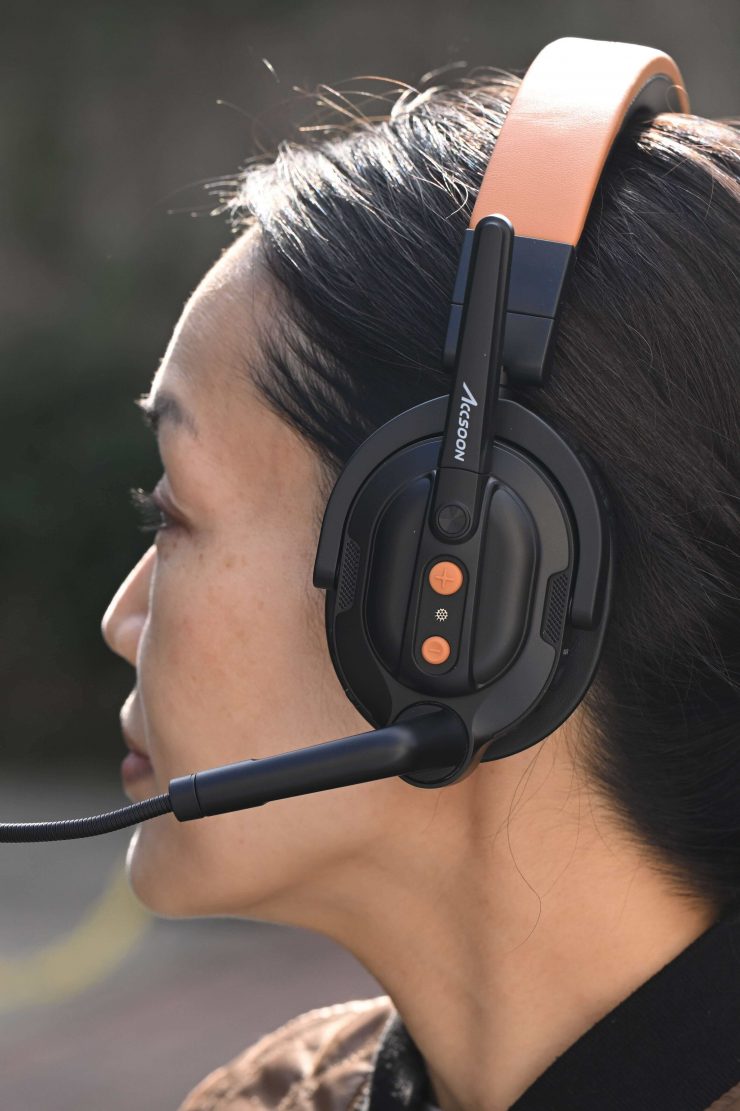
For me, along with comfort and audio quality, usability is a big factor. Everyone on your crew who has a headset needs to be able to use it easily without it getting in the way of what they are doing. The last thing I want on set is a crew member complaining that they can’t get their headset to work. Everything needs to be simple to use as well as reliable.
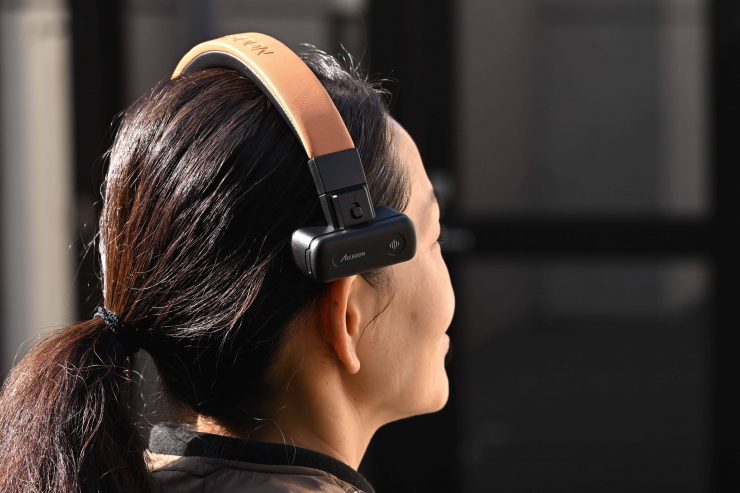
The easiest way to actually test out headsets is to get feedback from a crew after they have used them, so that is exactly what I did. I used the system on a couple of shoots and everyone in the crew was reasonably happy with how they performed, but they didn’t like the delay. As I previously mentioned I didn’t find them to be overly comfortable, but that’s not to say they are uncomfortable either.
The signal works over quite large distances when you have line of sight, but it will struggle if there are buildings or other man-made structures between the headsets. If the signal does drop out, then it will re-establish automatically as soon as it comes back into range. However, the issue I had was that when I was testing the system, sometimes when the signal dropped out, I had to come right back to within about 10-15m of the master and another headset for it to connect back up.
In a very congested and busy RF environment in the middle of Tokyo, I found that I was able to get around 1476′ / 450m before I started having issues with the signal. This was a little bit more than the max claimed range of 11312′ / 399m. What you need to be mindful of is that distance is usually only going to be achievable in open areas without a lot of RF interference. I found the operating distance to be comparable to the more expensive CoMo 1.9Ghz versions, but it was more prone to the occasional bit of interference.
I also found that if I went around a corner with a large building in the way I could walk for about 10m / 33′ before I lost the signal. You really needed to be in line of sight over distances larger than about 50m for the system to work well.
The overall quality of the audio and what you can hear is decent and I was reasonably happy with how they performed, apart from the aforementioned delay.
The headsets did work as advertised and they are trouble-free to use and they are plug and play and require no set-up.
Pricing & Availability
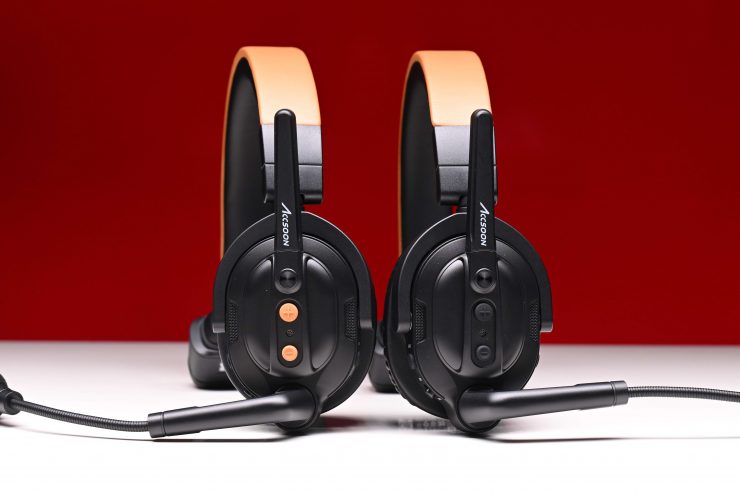
You can also purchase an Accsoon CoMo SE 1 Host Full-Duplex Wireless Intercom Headset (2.4 GHz) by itself for $99 USD, or a Accsoon CoMo SE 1 Receiver Full-Duplex Wireless Intercom Headset (2.4 GHz) for $99 USD.
Other Options
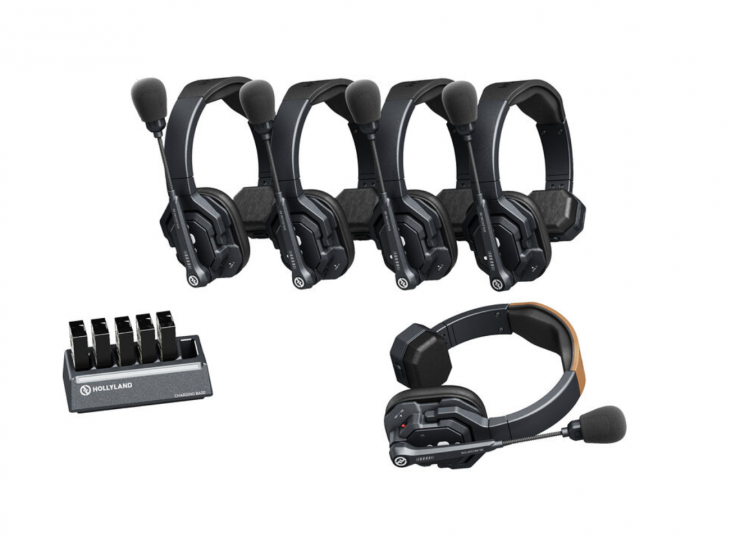
There is a vast array of options at varying price points. Direct competition comes in the form of the Hollyland Solidcom SE Global 5S 5-Person Full-Duplex Single-Ear Noise-Canceling Headset Intercom System (2.4 GHz). Other systems such as the Saramonic WiTalk-WT4S 4-Person Full-Duplex Wireless Intercom System with Single-Ear Headsets (1.9 GHz), and CAME-TV WAERO Duplex Digital Wireless Foldable Headset with Hardcase 4 Pack could also be considered competition, but they operate in the 1.9GHz spectrum.
Below are some of the options:
- Hollyland Solidcom SE Global 5S 5-Person Full-Duplex Single-Ear Noise-Canceling Headset Intercom System (2.4 GHz) $579 USD
- Saramonic WiTalk-WT4S 4-Person Full-Duplex Wireless Intercom System with Single-Ear Headsets (1.9 GHz) $489 USD
- Hollyland Solidcom C1 Pro-6S Full-Duplex ENC Wireless Intercom System with 6 Headsets $1,949 USD
- Hollyland Solidcom C1 Pro-4S Full-Duplex Wireless Intercom System with 4 Headsets (1.9 GHz) $1,299 USD
- Hollyland Solidcom C1-4S Full-Duplex Wireless DECT Intercom System with 4 Headsets $999 USD
- Hollyland Solidcom C1-6S Full-Duplex Wireless DECT Intercom System with 6 Headsets $1,479 USD
- Eartec UltraLITE 4-Person Full-Duplex Wireless Intercom with 4 Single-Ear Headsets $735 USD
- Eartec UL541 5-Person Full-Duplex Wireless Intercom with 4 UltraLITE Single-Ear & 1 UltraLITE Dual-Ear Headsets ($940 USD)
- CAME-TV WAERO Duplex Digital Wireless Foldable Headset with Hardcase 4 Pack $535 USD
Conclusion
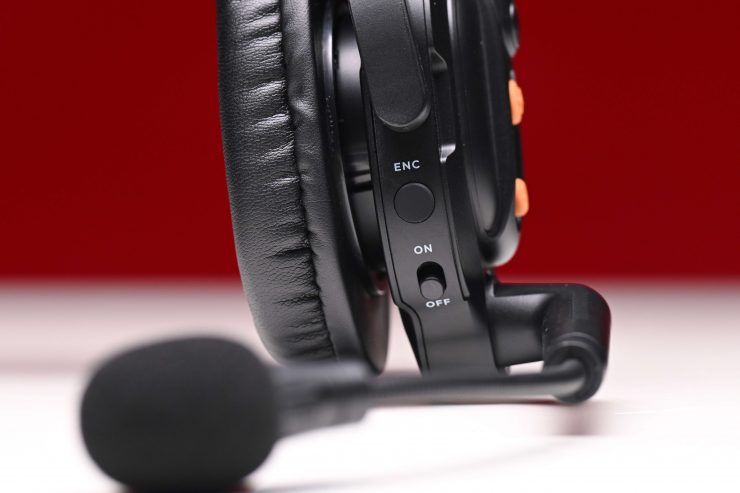
The Accsoon CoMo SE is an affordable option if you are looking for a set of duplex headsets that won’t empty your wallet. They are reasonably well-made and easy to set up. I didn’t particularly find them overly comfortable to wear (but this can vary from person to person) and I didn’t like that when I pulled the microphone up to mute it the whole headset moved on my head. The caveat with it being a 1.9Ghz system is that there is quite a lot of delay.
On the positive side, the audio quality is decent and I like the long operating times you can get on a single battery. The range was also better than advertised and I think for most people looking at this system they will be more than happy with the performance.
Yes, it is around $90 USD more affordable than the competing Hollyland Solidcom SE Global 5S 5-Person Full-Duplex Single-Ear Noise-Canceling Headset Intercom System (2.4 GHz), but I didn’t find it as comfortable and as easy to use. My job as a reviewer is to give you a completely honest assessment of a product and that is why it is important to compare it to other competing products when you can.
For a company that is relatively new to making duplex headsets, this is a decent offering, but there are definitely things that I would like to see improved.


